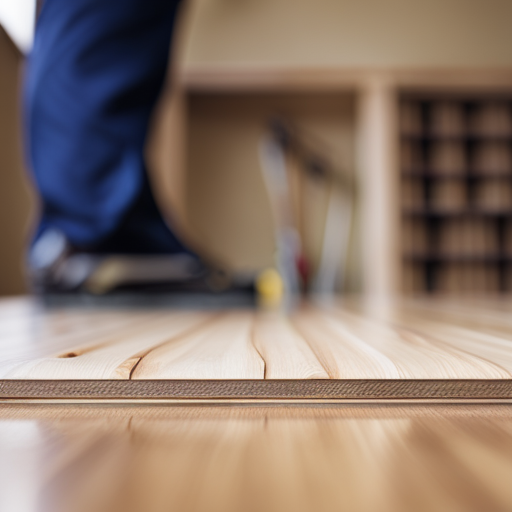
Hair damage caused by relaxer treatments can be a distressing experience for individuals seeking straighter, more manageable hair. Understanding the severity of the damage is crucial in devising an effective repair strategy.
Deep conditioning treatments provide essential nourishment to restore moisture and vitality to the hair strands. Heat styling should be avoided to prevent further harm, while regular trimming and cutting help eliminate damaged ends.
Protein treatments aid in restoring strength and elasticity, while protective styles minimize additional damage. Opting for natural products and practicing patience and consistency are key elements in promoting healing.
Seeking guidance from a hair care specialist can provide professional expertise in navigating this process safely and effectively.
Assessing the Damage: Understanding the Severity
Understanding the severity of the damage inflicted by a relaxer treatment is crucial in effectively assessing and addressing subsequent hair repair strategies. The use of relaxers can cause significant damage to the hair, including weakening of the hair shaft, breakage, and split ends. It is important for individuals to carefully evaluate their hair after undergoing a relaxer treatment to determine the extent of the damage.
One aspect that should be considered when assessing the severity of relaxer damage is an individual’s hair care routine. Factors such as frequency of relaxer treatments, use of heat styling tools, and overall maintenance can contribute to the level of damage experienced. Additionally, examining any existing split ends can provide valuable insight into the condition of one’s hair.
Repairing split ends is an essential step in restoring damaged hair. Split ends occur when the protective outer layer (cuticle) of a strand becomes damaged or worn away, causing it to split into two or more sections. To repair split ends, individuals may need to trim off these damaged portions regularly. Implementing preventative measures such as reducing heat styling and using products specifically formulated for repairing split ends can also aid in preventing further damage.
## Deep Conditioning: Nourishing Your Hair from Within
Nourishing the hair through deep conditioning treatments is a crucial step in addressing the effects of chemical processing on the hair. Chemical relaxers can cause significant damage, such as dryness, brittleness, and breakage, leaving the hair weak and prone to further damage. Deep conditioning treatments help to restore moisture, strengthen the strands, and improve overall hair health.
Here are three essential aspects to consider when using deep conditioning treatments:
1. Hair masks: Hair masks are intensive treatments that provide deep nourishment to the hair. They typically contain ingredients like shea butter, coconut oil, or argan oil that penetrate deeply into the hair shaft, replenishing lost moisture and repairing damaged cuticles. Applying a hair mask once or twice a week can significantly improve the condition of chemically processed hair.
2. Protein-based conditioners: Protein-based conditioners are formulated with hydrolyzed proteins that help repair damaged protein structures in the hair. These conditioners strengthen and fortify weakened strands while reducing breakage caused by chemical processing.
3. Hair oils: Hair oils like jojoba oil or olive oil can be used as pre-shampoo treatments or leave-in conditioners for added nourishment and protection. These oils help seal in moisture, prevent frizz, and enhance shine.
## Avoiding Heat Styling: Give Your Hair a Break
To minimize the negative impact of chemical processing on the hair, it is advisable to limit the use of heat styling tools. Excessive heat can further damage already weakened hair, leading to breakage and dryness. Instead, individuals should consider alternative methods for styling their hair that do not rely on high temperatures.
One option is to avoid excessive styling altogether. This means allowing the hair to air dry instead of using a blow dryer and refraining from using hot tools such as curling irons or straighteners on a daily basis. By giving the hair a break from heat styling, it can recover and regain its natural strength.
Another approach is to use silk or satin hair accessories. These materials are smoother than traditional fabrics like cotton and reduce friction between the hair strands and the accessory itself. This helps prevent tangles, breakage, and frizz that may occur when using accessories made from rougher materials.
## Trimming and Cutting: Removing Damaged Ends
Trimming and cutting damaged ends is a recommended practice in maintaining the health and integrity of chemically processed hair. Chemical processing, such as relaxers, can weaken the hair structure, leading to breakage and split ends. Trimming and cutting are essential steps in hair repair methods as they remove the damaged portions of the hair shaft, preventing further damage from spreading. This process also promotes healthy regrowth.
When trimming or cutting chemically processed hair, it is crucial to use sharp scissors to avoid causing additional damage. It is advisable to seek professional assistance from a trained hairstylist who can assess the severity of the damage and determine how much needs to be trimmed. Regular trims every 6-8 weeks can help maintain healthy-looking hair.
Preventing future damage is equally important when repairing chemically processed hair. Using gentle shampoos and conditioners specifically formulated for damaged or chemically treated hair can help restore moisture and prevent further breakage. Additionally, minimizing heat styling tools, protecting the hair with heat protectant sprays before using them, avoiding excessive brushing or combing, and incorporating deep conditioning treatments into your routine can all contribute to healthier-looking hair.
## Protein Treatments: Restoring Strength and Elasticity
Protein treatments are commonly used in the restoration of strength and elasticity to chemically processed hair. These treatments play a crucial role in repairing damage caused by chemical processes such as relaxers. Chemical relaxers can weaken the hair’s structure, leading to breakage, dryness, and loss of elasticity.
Protein treatments work by replenishing the protein levels in the hair shaft, which is essential for maintaining its strength and integrity. Proteins are the building blocks of hair and help to repair damaged areas. These treatments typically contain hydrolyzed proteins that have been broken down into smaller molecules for better absorption into the hair shaft.
When applied to chemically processed hair, protein treatments penetrate deep into the cuticle layer, filling in gaps and strengthening weak spots. This results in improved hair health and increased resistance to breakage. Additionally, protein treatments can help restore moisture balance and enhance overall manageability.
It is important to note that while protein treatments are beneficial for repairing damage, it is crucial not to overdo them. Excessive use of protein-based products can lead to an imbalance between moisture and protein levels in the hair, causing it to become brittle and prone to breakage.
## Moisturizing Techniques: Hydrating Your Hair
Moisturizing techniques are essential for maintaining the hydration levels of chemically processed hair. Chemically treated hair, such as that which has undergone relaxer treatments, often becomes dry and brittle due to the harsh chemicals used. To combat this issue and restore moisture to the hair, various moisturizing techniques can be employed.
One effective method is the use of hair mask recipes specifically designed for chemically processed hair. These masks typically contain ingredients such as natural oils (such as coconut oil or argan oil), shea butter, honey, and aloe vera gel. These ingredients work together to provide deep hydration and nourishment to the hair strands.
Another technique that can enhance moisturization is incorporating essential oils into one’s hair care routine. Essential oils like lavender, rosemary, and peppermint have been found to have moisturizing properties that help in retaining moisture in chemically processed hair. They can be added to carrier oils or water-based sprays for easy application.
It is important to note that when using these techniques, it is crucial to follow proper instructions and guidelines provided by reputable sources. Additionally, conducting a patch test prior to applying any new product on the scalp or hair is recommended.
## Protective Styles: Minimizing Further Damage
Transition: After discussing moisturizing techniques for hydrating your hair, the next step in repairing hair damaged by relaxers is to implement protective styles that minimize further damage. These hairstyles serve as a shield against external elements, reducing breakage and promoting healthy hair growth.
Implementing protective hairstyles involves choosing styles that keep the ends of the hair tucked away, preventing friction and exposure to environmental stressors. Additionally, these styles reduce the manipulation of the hair strands, which can lead to breakage. It is important to note that not all protective styles are suitable for every individual as different hair types require specific attention and care.
To assist in selecting an appropriate protective hairstyle, consider referring to the following table:
| Protective Hairstyles | Hair Type | Benefits |
|———————-|———–|———-|
| Braids | All | Keeps hair secure and protected from external factors such as wind or harsh weather conditions |
| Twists | Coily | Reduces tangling and knotting, minimizing breakage during styling or detangling |
| Buns | Straight | Keeps ends tucked away and prevents rubbing against clothing or accessories |
| Cornrows | Wavy | Distributes tension across the scalp evenly, reducing stress on individual strands |
## Avoiding Harsh Chemicals: Opting for Natural Products
One way to promote healthier hair is by opting for natural products instead of harsh chemicals. Natural remedies, such as DIY hair masks, can be effective in repairing and nourishing damaged hair. Harsh chemicals found in many commercial hair products can strip the hair of its natural oils, leading to dryness, breakage, and overall damage. On the other hand, natural ingredients like avocado, coconut oil, honey, and aloe vera have been used for centuries to improve the health and appearance of hair.
DIY hair masks made from these natural ingredients can provide deep conditioning and hydration to damaged strands. Avocado is rich in vitamins A and E, which help nourish the scalp and promote healthy hair growth. Coconut oil has moisturizing properties that can prevent protein loss in the hair shafts. Honey acts as a humectant, attracting moisture to the hair follicles. Aloe vera contains enzymes that repair dead skin cells on the scalp and stimulate new cell growth.
## Patience and Consistency: Giving Your Hair Time to Heal
To promote healing and improve the health of one’s hair, it is important to maintain patience and consistency in their hair care routine. The healing process for damaged hair requires time and dedication. Hair repair techniques can be effective, but they must be implemented consistently over a period of time to yield noticeable results.
When it comes to repairing damaged hair, patience is key. It is essential to understand that the healing process takes time and cannot be rushed. Consistency in following a proper hair care routine is equally important. This includes using appropriate products specifically formulated for damaged hair, such as deep conditioning treatments and leave-in conditioners.
In addition to regular conditioning treatments, other effective hair repair techniques include minimizing heat styling tools, avoiding harsh chemicals or excessive manipulation of the hair, and reducing exposure to environmental stressors like sun damage or chlorine from swimming pools.
It is also crucial to protect the repaired hair by adopting protective hairstyles that minimize tension on the strands. Regular trims are recommended to remove split ends and prevent further damage.
## Seeking Professional Help: Consulting a Hair Care Specialist
Consulting a hair care specialist can be beneficial for individuals seeking professional help in improving the health and condition of their damaged hair. Hair care specialists are trained professionals who have extensive knowledge and experience in dealing with various hair concerns, including damage caused by chemical treatments like relaxers. They can provide personalized advice and recommend suitable treatments based on the specific needs of each individual.
One of the key benefits of consulting a hair care specialist is their expertise in identifying the root cause of hair damage and developing a targeted treatment plan. They can assess the extent of the damage, determine any underlying issues, and suggest appropriate solutions to restore the hair’s health. This may involve using specialized products, adopting specific styling techniques, or undergoing professional salon treatments.
Moreover, visiting a hair care specialist ensures that you receive accurate information and guidance regarding your hair care routine. They can educate you about proper cleansing methods, product selection, and styling practices that promote healthy hair growth while minimizing further damage. Additionally, they may offer recommendations on nutritional supplements or dietary changes that can support overall hair health.
However, it is important to note that professional hair care services may come at a cost. The price range for consultations with a specialist varies depending on factors such as location, reputation, and expertise. Similarly, salon treatments or recommended products may also have associated costs. It is advisable to inquire about pricing beforehand to ensure it aligns with your budgetary considerations.
In conclusion, consulting a qualified hair care specialist offers numerous benefits for individuals seeking assistance with damaged hair. Their expertise can help diagnose the issue accurately and develop tailored treatment plans for effective recovery. However, it is essential to consider potential costs associated with professional services when planning your approach towards repairing damaged hair.
| Benefits | Cost |
|———-|——|
| Expertise in identifying causes of damage | Varies depending on location |
| Personalized advice & treatment plans | Reputation & expertise |
| Education regarding proper routine & practices | Salon treatments & products |
| Support for overall hair health | Budget considerations |
## Frequently Asked Questions
### Can I repair my hair after relaxer damage without cutting it?
There are alternatives to cutting damaged hair caused by relaxers. Natural remedies such as deep conditioning treatments, protein treatments, and using essential oils can help repair relaxed hair without the need for cutting.
### How long does it take to see results when repairing hair after relaxer damage?
The timeline for repairing hair after relaxer damage varies depending on the extent of the damage. It may take several months to see noticeable improvements. Following a recommended hair care routine, including deep conditioning treatments and avoiding further chemical treatments, can help expedite the repair process.
### Can I use heat styling tools occasionally while repairing my hair after relaxer damage?
Using heat styling tools occasionally while repairing hair after relaxer damage can be detrimental. It is recommended to use a heat protectant to minimize damage. Air drying hair provides benefits such as reducing breakage and preserving moisture.
### Are there any specific ingredients I should look for in deep conditioning products for repairing hair after relaxer damage?
When choosing deep conditioning products to repair hair after relaxer damage, look for ingredients that provide deep moisturization, such as natural oils like coconut or argan oil, and proteins like keratin. These ingredients can help nourish and strengthen the hair, promoting its recovery.
### Can I continue to dye or color my hair while repairing it after relaxer damage?
Hair dye alternatives and natural hair repair methods can be used while repairing hair after relaxer damage. These options provide a safer approach to coloring the hair, minimizing further damage and promoting the restoration of healthy hair.
## Conclusion
In conclusion, repairing hair after relaxer damage requires a systematic approach. This approach includes assessing the severity of the damage, deep conditioning to nourish the hair from within, avoiding heat styling to give it a break, trimming and cutting to remove damaged ends, protein treatments to restore strength and elasticity, opting for protective styles to minimize further damage, avoiding harsh chemicals by using natural products, being patient and consistent in the healing process, and seeking professional help from a hair care specialist.
Following these steps will aid in restoring the health and vitality of your hair.



Insightful piece
Insightful piece